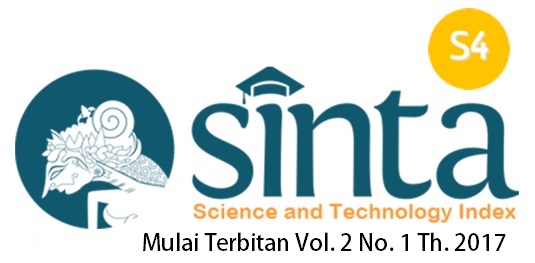Optimasi Asupan GGL Ideal Pada Usia Produktif Dengan Algoritma Genetika
Abstract
Financial security encourages fast food eating habits, the characteristics of problems that require solving genetic algorithms that have multi-objective and multi-criteria. Based on the mathematical model built, an analysis is performed to find the best (optimal) solution. Optimization is an effort or activity to get the best results with the requirements given. Genetic Algorithm as a branch of Evolution Algorithm is an adaptive method commonly used to solve a value search in an optimization problem. To check the results of the optimization we need a fitness function, which signifies a coded description of the solution. During the process, the parent must be used for reproduction, crossing and mutation to obtain new offspring. Determination of the composition of the ideal GGL for productive age must meet the minimum limits for each component of nutrition. The higher the Fitness value the better the chromosomes become a candidate solution. Offspring results generated from the results of the reproduction process are crossever and mutation. The selection process is carried out to obtain the best chromosomes that will be made into the next generation's population. The best chromosomes offSpring 10 Fitness 12737.34.
Keywords
Full Text:
PDFReferences
F. Eliantara, I. Cholissodin, Indriati, “Optimasi Pemenuhan Kebutuhan Gizi Keluarga Menggunakan Particle Swarm Optimization”, Prosiding SNRT (Seminar Nasional Riset Terapan), A 166, Nopember 2016.
L. S. Ramdhani, “Penerapan Particle Swarm Optimization (PSO) Untuk Seleksi Atribut Dalam Meningkatkan Akurasi Prediksi Diagnosis Penyakit Hepatitis Dengan Metode Algoritma C4.5”, SWABUMI VOL IV No. 1, Maret 2016.
A. Wanto, “Optimasi Prediksi Dengan Algoritma Backpropagation Dan Conjugate Gradient Beale-Powell Restarts”, JURNAL NASIONAL TEKNOLOGI DAN SISTEM INFORMASI - VOL. 03 NO. 03 hal. 370-380, 2017.
M. I. Pratiwi, W. F. Mahmudy, C. Dewi, “Implementasi Algoritma Genetika Pada Optimasi Biaya Pemenuhan Kebutuhan Gizi”, DORO: Repository Jurnal Mahasiswa PTIIK Universitas Brawijaya, vol. 4, no. 6, Desember 2016.
A. Kartikasari, D. E. Ratnawati, T. S. Kusuma, “Optimasi Komposisi Makanan untuk Penderita Hipertensi Menggunakan Algoritma Genetika dan Simulated Annealing”, Jurnal Pengembangan Teknologi Informasi dan Ilmu Komputer, Vol. 1, No. 11, hlm. 1236-1243, November 2017.
N. F. Risky. M. Puspita, Adriyanto, “Analisis Asupan Gula, Garam dan Lemak (GGL) dari Jajanan pada Anak Sekolah Dasar Negeri dan Swasta di Kota Surabaya”, Open access under CC BY – SA license, hal 58-62, Desember 2018.
A. Sindar, RN Zendrato, " Optimasi Penugasan Pegawai Menggunakan Metode Hungarian", Journal of Innovation Information Technology and Application (JINITA) Nomor 1 Volume 1 hal: 16-24 2019.
Ispandi, “Penerapan Algoritma Genetika untuk Optimasi Parameter pada Support Vector Machine untuk Meningkatkan Prediksi Pemasaran Langsung”, Journal of Intelligent Systems, Vol. 1, No. 2, December 2015.
J. S. Parapat, A. SIndar, 'Data Mining Algoritma C4.5 Pada Klasifikasi Kredit Koperasi Simpan Pinjam', Journal Jurnal Ilmu Teknik Elektro Komputer dan Informatika (JITEKI) Volume 4 Nomor 2 Pages 144-154
S. Maris, A. B. Kirana, E. A. Murbawani, B. Panunggal, “Zat gizi, massa lemak tubuh, dan tekanan darah pada wanita vegetarian dan nonvegetarian berusia 20-30 tahun”, Jurnal Gizi Indonesia, hal 17-28, 6 (1) 2017.
Refbacks
- There are currently no refbacks.






